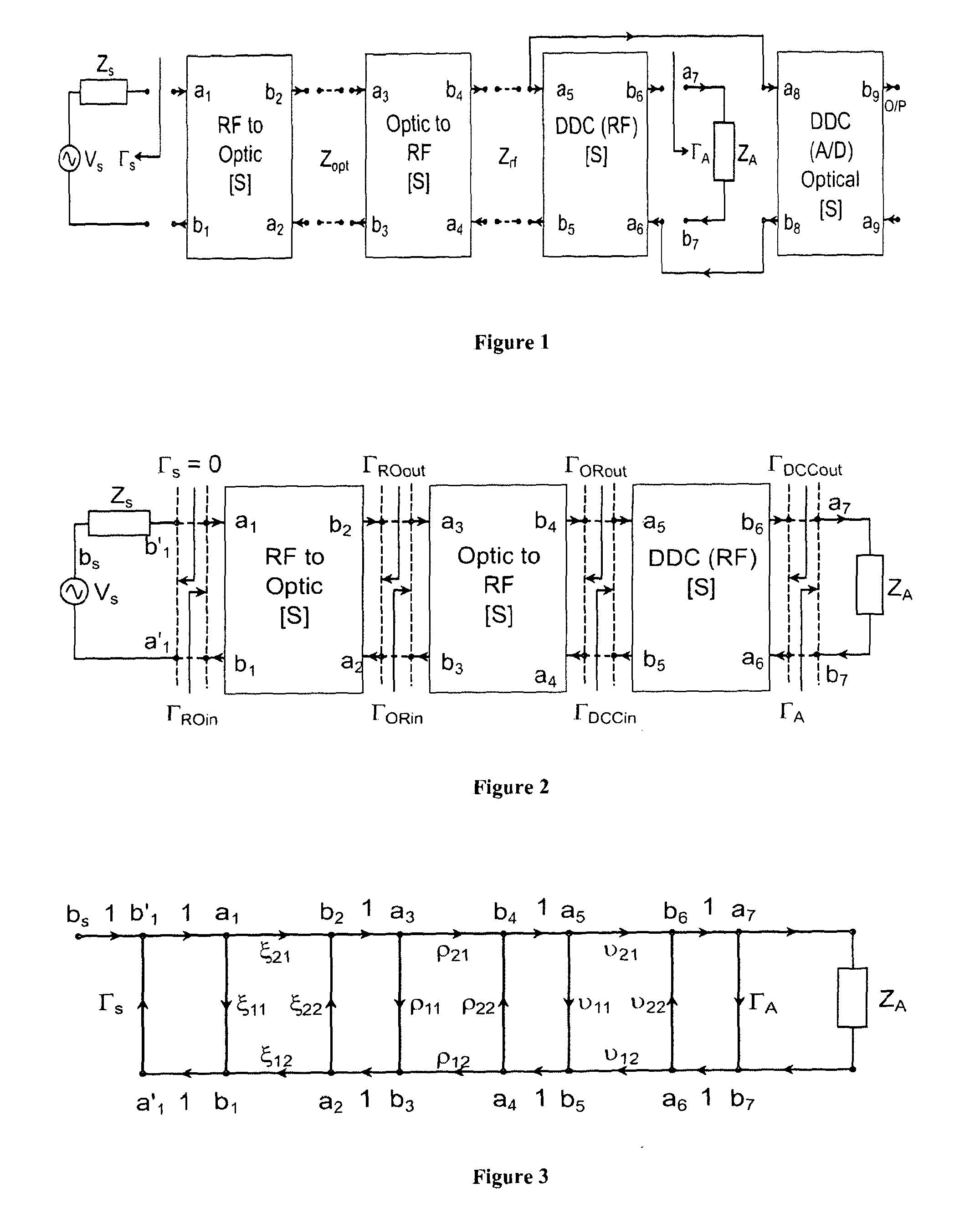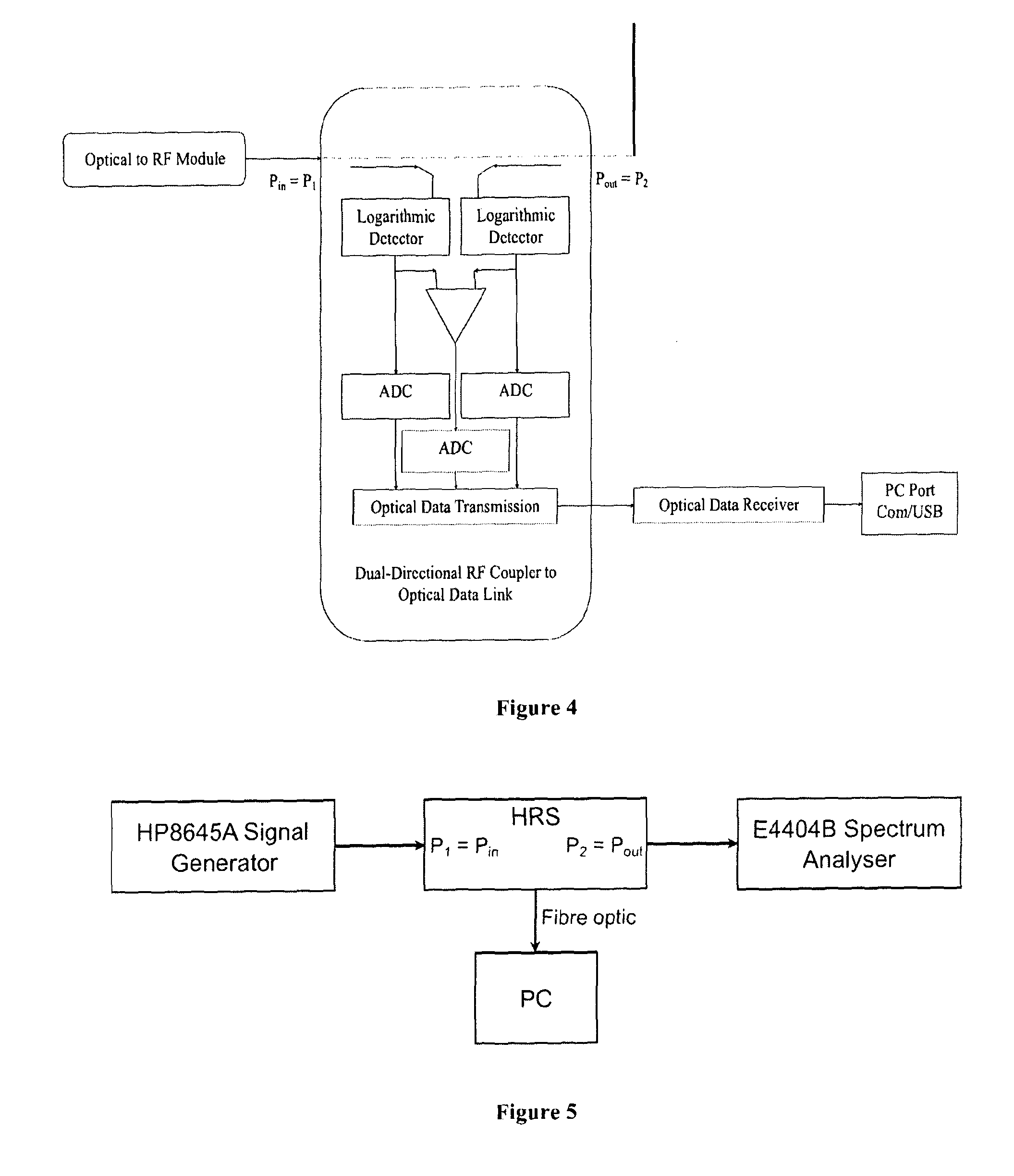Hybrid reflectometer system (HRS)
a reflectometer and hybrid technology, applied in the field of radio frequency (rf) signal test and measurement system, can solve the problems of error correction and interference with measurement, and achieve the effects of preventing rf interference of the signal being measured, improving accuracy, and improving accuracy
- Summary
- Abstract
- Description
- Claims
- Application Information
AI Technical Summary
Benefits of technology
Problems solved by technology
Method used
Image
Examples
Embodiment Construction
[0053]FIG. 1 shows the signal flow network analysis of the HRS which can be used to reduce complicated networks to relatively simple input-output relations. The RF network may then be characterised using scattering parameters. This technique is used to analyse the HRS and obtain the system's scattering parameters. For the network analysis the HRS consists of four modules; each module is a two-port network represented by a block which has two input ports and two output ports. The ports associated with each module are:
The RF to Optical Module
[0054]a1 Input incident signal node[0055]a2 Output reflected signal node[0056]b1 Input reflected signal node[0057]b2 Output incident signal node
The Optical to RF Module
[0058]a3 Input incident signal node[0059]a4 Output reflected signal node[0060]b3 Input reflected signal node[0061]b4 Output incident signal node
The Dual-Directional Coupler RF (DDC (RF)) Module
[0062]a5 Input incident signal node[0063]a6 Output reflected signal node[0064]b5 Input ref...
PUM
 Login to View More
Login to View More Abstract
Description
Claims
Application Information
 Login to View More
Login to View More - R&D
- Intellectual Property
- Life Sciences
- Materials
- Tech Scout
- Unparalleled Data Quality
- Higher Quality Content
- 60% Fewer Hallucinations
Browse by: Latest US Patents, China's latest patents, Technical Efficacy Thesaurus, Application Domain, Technology Topic, Popular Technical Reports.
© 2025 PatSnap. All rights reserved.Legal|Privacy policy|Modern Slavery Act Transparency Statement|Sitemap|About US| Contact US: help@patsnap.com



